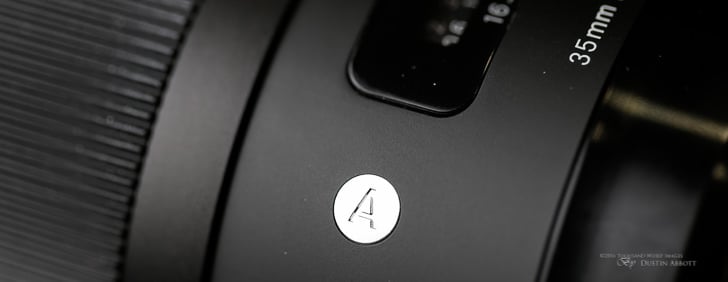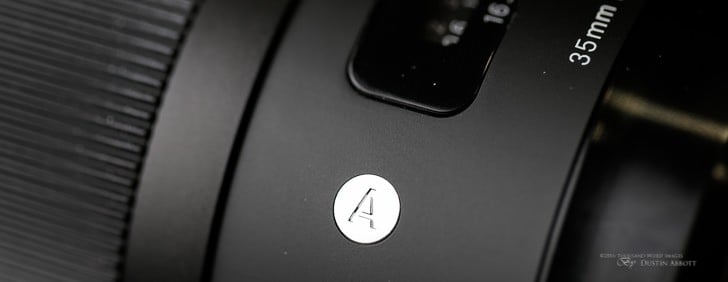
Review – Sigma 35mm f/1.4 DG Art
By: Dustin Abbott – WWW | Facebook | YouTube
Discuss the Sigma 35mm f/1.4 DG Art
I recognize that I'm a little late to the party in reviewing the Sigma 35mm f/1.4 DG HSM ART lens. It has been on the market for more than three years, and has gotten both writer's ink and photographer's dollars like no Sigma lens before it. Justin has already done a great review of the lens several years ago. While I will share a brief review of my own here, my goal is more to share some thoughts on how the Sigma compares with other 35mm options like Canon's new Canon EF 35mm f/1.4L II USM or Tamron's new 35mm f/1.8 VC lens (click links for CR's review of these lenses). If you want to see my more typical in depth thoughts, you can find them in this review here. The importance of this lens to Sigma can been seen in the fact that in the mind of many this lens was considered the benchmark to compare these new lenses to. This lens has brought Sigma a LONG way towards credibility, launching Sigma's rebranding/coming out party with their Global Vision initiative.
Build Quality and Design
After nearly four years Sigma's somewhat nonsensical “Art” and “Contemporary” categories still make no more sense, but I will concede that Sigma not only dramatically improved upon their older design (which frankly I was not a huge fan of), but have designed some of the best looking modern lenses, period. I've reviewed the 50mm, 18-35mm, 24-35mm, and now this lens from the ART series, along with the 150-600mm in both “Sport” and “Contemporary” variants, so the new Sigma look is not quite so new any longer, but I still favor it over most all other lens designs.
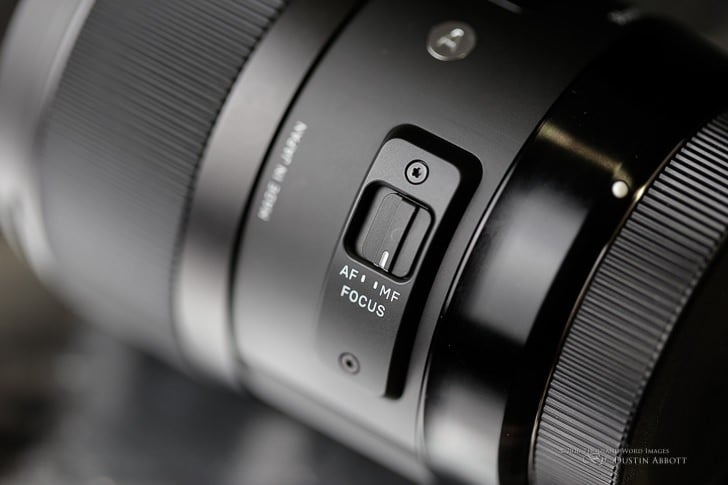
There is a very pleasing blend of glossy, matte, and ribbed surfaces that has both a modern yet elegant design. The blend of textures keeps the lens from being monochromatic or boring. The lens has small white text on one side that says, “Made in Japan”, an understated SIGMA brand on the top, and then the lens designation and filter thread size near the distance window of the top of the barrel. Less obvious is a very small sized serial number in a grey text that is only obvious under close examination. An elegant little silver circle with the letter A (for ART) rests next the focus distance window. On the bottom of the barrel is an 0xx number which clearly and obviously states the year of manufacture (bravo for simplicity!)
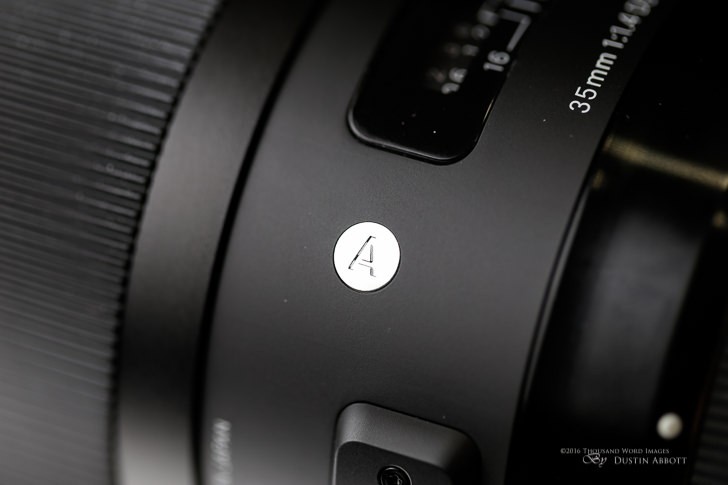
The lens has four distinct bevels that flow into a wider section as you move towards the front element. The first bevel flares from the lens mount section into the area of the distance window and the single switch that controls focus (Auto/Manual). The HSM (Hypersonic Motor) allows for full time manual override. The next bevel moves into the slightly wider focus ring. It has a nicely ribbed, slightly rubberized texture. The movement isn’t as smooth as, say, Tamron’s new 35mm f/1.8 VC lens, but no real complaints about the feel of the focus ring. Using it is another matter. Making a fine manual adjustment can be difficult due to the very small focus throw of only about 90 degrees (the Tamron 35 VC has nearly double that!). The final flare is to the front of the lens where the lens hood bayonet attaches with a soft touch material transition to the hood.
If there is a shortcoming here it is that the lens does not have any kind of weather sealing. In that sense the beauty is only “skin deep”. At the time that this lens was released, that wasn't really a big deal, as the main competitors from Canon (35L) and Nikon (35mm f/1.4G) also lacked any kind of weather sealing. But that has changed with recent releases, and while the Canon 35L II is twice the price of the Sigma (but is thoroughly weather sealed), the Tamron 35mm f/1.8 VC is not only nicely weather sealed but also undercuts the Sigma's price by $300 (at least in the US market).
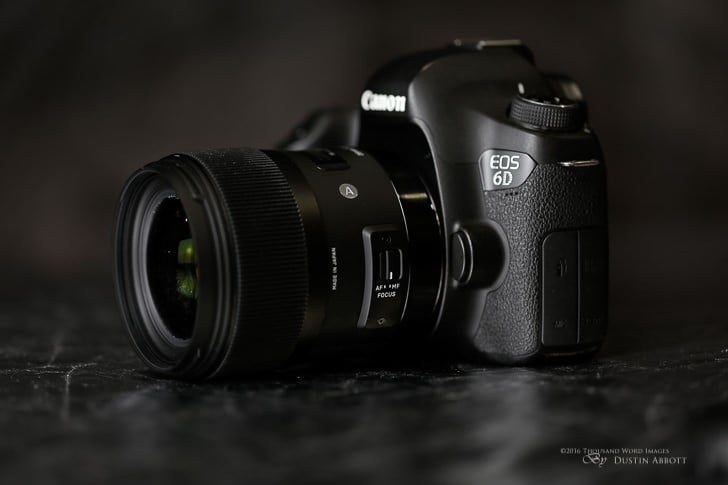
This lens got a lot of publicity due to having (at the time) class leading resolution and a beautiful lens design. A great price didn’t hurt. It was introduced at $899 while the Canon 35L was closer to $1500 and Nikon 35G even more. It's release managed to completely overshadow the release of Canon's excellent EF 35mm f/2 IS, a lens that was released at a too high price point and quickly relegated to becoming one of Canon's “underrated gems” after a price drop.
But it is now 2016, and Sigma faces pressure from an excellent lens beneath it in price (the Tamron), and a new class leader above it (the 35L II), not to mention the very stellar 35mm f/2 IS that is now $350 less.
| Lens | Sigma 35mm f/1.4 ART | Canon 35mm f/1.4L II | Canon 35mm f/2 IS | Tamron 35mm f/1.8 VC |
| Price (at time of review) | $899 | $1799 | $549 | $599 |
| Overall Length | 94mm | 105.5mm | 62.6mm | 81.3mm |
| Overall Weight | 665g | 760g | 335g | 479g |
| Front Filter Thread | 67mm | 72mm | 67mm | 67mm |
| Elements/Groups | 13/11 | 14/11 | 10/8 | 10/9 |
| Min Focus/Max Mag | 30cm/.20x | 28cm/.21x | 24cm/.24x | 20cm/.40x |
| Aperture Blades | 9 | 9 | 8 | 9 |
For some people the size of the two f/1.4 lenses here may be a deal breaker. Gone are the days when a prime was a little lens you could throw in your bag to bring along. The new Canon 35L II is basically the size of a 24-70 f/2.8 zoom, and the Sigma isn't much smaller. If size and weight are a factor to you, consider either the 35 IS or the Tamron 35 VC; they are both optically excellent and more reasonably sized.
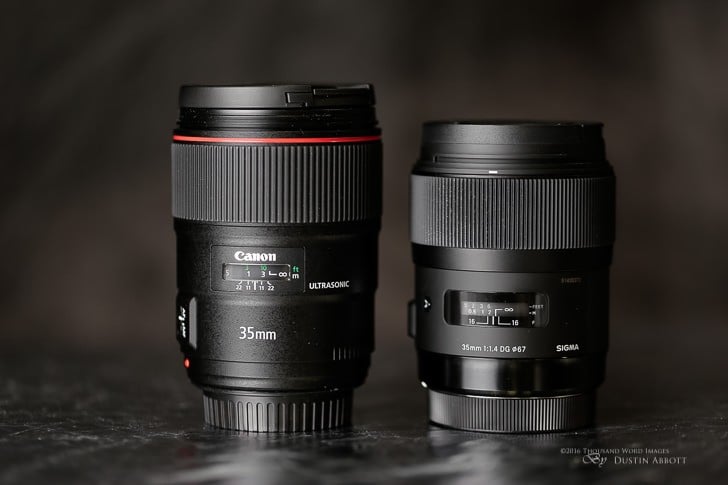
The Sigma's specs are very good overall, but it does lose in one category – its close focus ability. It can focus down to one foot/30cm and has a .20x magnification (1/5th life size) is useful, but not nearly as useful as the Canon 35 IS at .24x and is doubled by the Tamron's .40x figure (one of the greatest strengths of that lens!). This is something to consider if you don't own a macro lens and would like to get dual-purpose use out of a 35mm prime.
Autofocus

For a more in depth analysis of the autofocus performance of these competitors, take a look at this video:
This continues to be the one major thing that holds Sigma lenses back. It has nothing to do with the manner of focus; the 35A focuses quickly and quietly and always seems confident, but the end results aren't always reliable. I most consistently got poor focus accuracy when using AF Servo focus or when trying to focus on subject beyond 10 feet but short of infinity. While my focus results were typically decent, I just didn't find that I had as consistent of focus accuracy as using either the 35L II, 35 IS (one of Canon's better focusing prime lenses), or even the Tamron 35 VC. I always seem to ignite some hatred from Sigma fanboys when I bring this up, but I've found this to be true of essentially all the ART series lenses (of which I've reviewed most of them). I hope with each new lens that Sigma has this solved, and I do think the 24-35mm f/2 ART was better overall.
I get reports from some long term owners that they are very satisfied with the focus accuracy of their ART lenses; I get reports of focus inconsistency from others. Some report that using the Sigma USB dock was highly effective at solving their focus issues; others state that it didn't make enough of a difference. Your mileage may vary, but my conclusion is that if you plan to use your 35mm lens in a lot of situations highly demanding of autofocus accuracy one of the other lenses (mostly the Canons) are a better choice. It is frequently hard to be beat first party AF systems.
I will add that I felt the Tamron 45 VC in the comparison above was not performing up to the specifications of the previous copies I've used, so I returned it for exchange (Tamron verified it was not working properly) and am currently awaiting the lens' replacement. I never like having to return a lens because it isn't quite up to snuff, but I've had to do the same with first party lenses before, too, so take it for what it is worth. I'll temper this with a statement from Roger at Lens Rentals in this article, “The Tamron 45mm f/1.8 demonstrates pretty remarkable consistency, one of the most outstanding lenses we've tested as far as low copy-to-copy variation is concerned.” I put a lot of stock in what Roger reports, so I was actually surprised to encounter the issue with the 45 VC.
Image Quality

This has been and continues to be the area where the Sigma punches far above its price point. It is the reason why this lens is now in so many photographer's kit; it delivers in the resolution/image quality department. In the past it was common for wide aperture primes to be a bit “dreamy” wide open. This was frequently caused by both a lack of contrast at wide apertures along with chromatic aberrations that would rob the lens of apparent sharpness and make images look somewhat hazy in the details. This isn't the case with the Sigma 35A; it delivers at all apertures. Not only that, but while some primes are sharp in the center but get increasingly soft as you head out across the frame, the Sigma does a stellar job of extending that sharpness across most all of the frame.

While I recognize that lenses like this are going to be used at a variety of apertures by end users, I tend to test lenses like this primarily at apertures wider than f/2.8. The reason being that it is in this zone where prime lenses really need to show their worth. The reality is that a number of modern zoom lenses are already excellent at their wide open f/2.8 aperture, so a modern prime really needs to shine at even wider apertures to justify its existence. The Sigma 35A certainly does.
Even at f/1.4 images look crisp and sharp, providing a great “pop” of subjects from backgrounds. Even landscape type images look quite good at f/1.4. Resolution is crisp, contrast is strong, and image quality is generally excellent. Check out this landscape shot at f/1.4 and the crops from across the frame:

The new Canon 35L II gets the edge in overall resolution, and I also didn’t feel that the Sigma produced the same degree of microcontrast as the Canon. The Canon is also twice as expensive, but both the Canon 35 f/2 IS and the Tamron 35 f/1.8 VC are optically competitive as well. The Sigma has the edge in center sharpness, but the Tamron is better towards the edge of the frame. Where the bigger f/1.4 lenses excel, though, as in subject isolation. They produce more “three dimensional” looking images due to the shallow depth of field. I definitely favored the look of images from the Canon 35L II out of all of these lenses, but just know that in terms of absolute resolution there is only minor variances between any of these lenses. I would recommend using some other factor rather than purchasing based on resolution alone.
The Sigma definitely still holds its own optically against the new competitors.

I personally love the 35mm focal length. It is a great “walk around” lens for either street shooting or nature captures, and the wide aperture and close focus ability of these lenses gives you a number of creative options in the field.
Sigma did a good job of suppressing chromatic aberrations with the optical elements and coatings. While not nonexistent, the chromatic aberrations are well controlled and rarely objectionable in any way. You will see a little bit of green or purple fringing periodically, but it is leaps and bounds ahead of the older 35L. The new 35L II is now tops due to its expensive BR Optics element, but the reality is that none of these four options will really give you an issue with chromatic aberrations.
Another strength of this lens is a near complete lack of distortion, but all of the others are quite good in this area as well.

The type of images that the Sigma is capable of is truly impressive. That incredibly sharp resolution on the subject at wide apertures continues to be revelatory. You can view many more samples in the Sigma 35mm f/1.4 ART Image Gallery.
Optical Weaknesses?
The only real fly in the ointment optically is the very heavy vignette. This is shared by the new 35L II (unfortunately) and the Canon 35 IS, though the Tamron 35mm VC was able to nicely clean this issue up.
The flare resistance of the two f/1.4 options trails the Tamron and the 35 IS. All of them turn in a pretty decent performance in real world use, but the smaller aperture options are stronger in this regard.

The list of things to criticize optically is pretty short, as you can see!
Bokeh Quality

Determining a lens' bokeh quality is somewhat challenging because bokeh is both a subjective measure (the Helios 44-2 “swirly” bokeh is either wonderful or terrible depending on your perspective) and it is also notoriously difficult to demonstrate in a controlled test. Since its introduction there has been some debate about the bokeh quality from the Sigma. I myself have referred to it as being somewhat “clinical”, and feel that the lens tipped the scales more towards sharpness than overall drawing. The reality is that while the lens is perhaps not exceptional in this regard, it is in no way objectionable either. I've been using the lens side by side with the Canon 35L II over the past five weeks, and while I instinctively prefer the “look” of the images from the 35L II, the reality is that the differences are subtle at most.
I did my best to really break down bokeh performance in this video, which interactively takes a look at bokeh performance and shares bokeh galleries from each of them.
When comparing the Sigma 35A and Canon 35L II side by side at a wide open f/1.4 aperture it is actually surprising how similar the bokeh highlights looked. The shape of the highlights is roughly the same, and while there is just a hint of additional busyness in the Sigma’s highlights, that is only detectable at 1:1 pixel level. The Canon shows a slight bit more concentric rings while the Sigma shows more of a pattern. As you move away from the center of the frame both lenses show a tendency towards lemon shapes instead of circles – a pretty common phenomenon.
If you want a more intense look at the bokeh quality (and the samples from each lens), take a look here:

But as I said before, this test really only shows bokeh quality in one very specific way, and doesn't tell the whole story. I would encourage you to judge the quality of the bokeh from any of these lenses based more on real life usage rather than any isolated test. Bokeh quality is always a subjective thing, and most all of these lenses produce very good real world results…including the Sigma (I think the image above is rather, ahem, tasty). Here is a little gallery with a few bokeh examples from the Sigma:
In Conclusion:
Though neither I or the Sigma are weather sealed, we both survived the snowstorm in this video review:
The merits of this lens are not going to be determined by my conclusions. Over the past three years this lens has received both critical and commercial success, and is, in my opinion, perhaps the most important lens that Sigma has ever made. Sigma was able to completely redefine its position in the market based primarily on the strength of this lens. It is telling that while chart tests show an advantage in resolution for the new Canon 35L II, that advantage is slight despite three additional years of development and a price point double that of the Sigma. Look below for a breakdown of my opinion of the give and take of the Sigma's competitors. The new Canon's advantage in image quality is a matter of degrees, but it certainly has a stronger advantage in autofocus consistency. That remains the one area that might should give you pause when considering the Sigma 35mm f/1.4 DG HSM ART. There is little else to strongly criticize, and some have reported having good autofocus success with their own copy. As the saying goes, “Your Mileage May Vary”. If your budget doesn't extend to the new Canon 35L II, and you feel you need an f/1.4 aperture, then the Sigma remains the clear choice for quality optics at a reasonable price. I guess some things haven't changed.
Purchase Options:
- Sigma 35mm f/1.4 DG Art: Adorama
Pros:
- Set a new standard for optical performance at the 35mm focal that has only now been mildly surpassed
- Beautiful and functional build
- Well controlled chromatic aberrations
- Low distortion
- High resolution even wide open
- Fast and quiet autofocus
- Includes nice padded case
- Excellent value to performance ratio
Cons:
- Autofocus performance can be inconsistent
- Fairly heavy vignette
- Flare resistance could be better
- Lacks weather sealing
Here's a few final samples from the Sigma 35mm f/1.4 ART Review:

